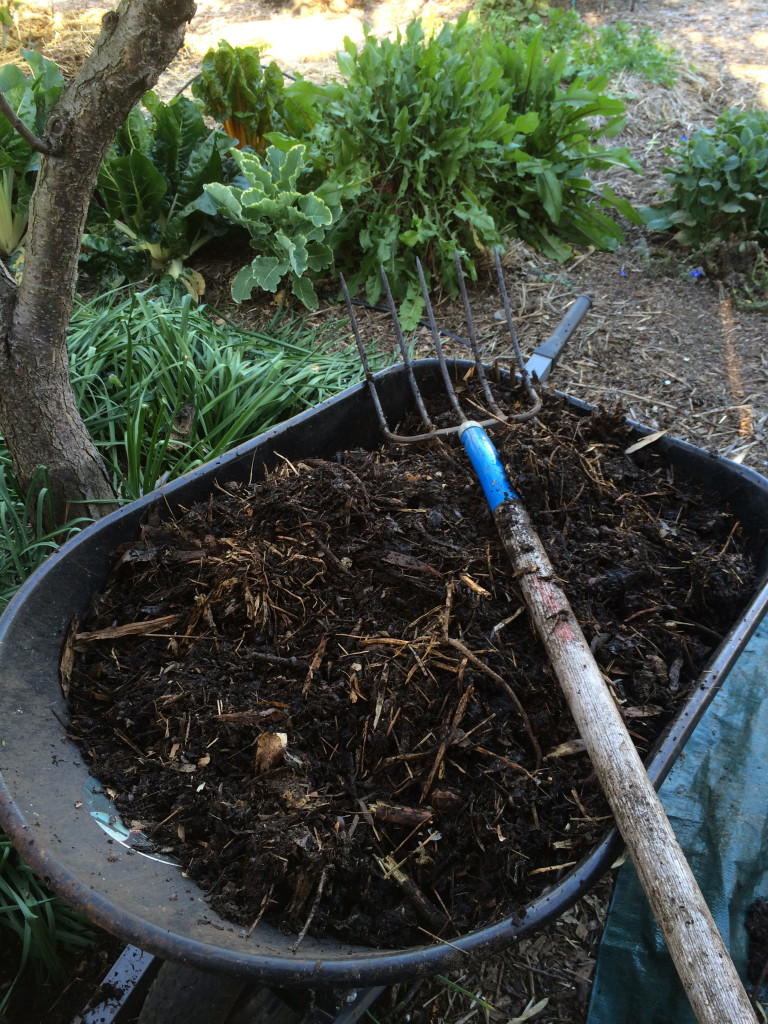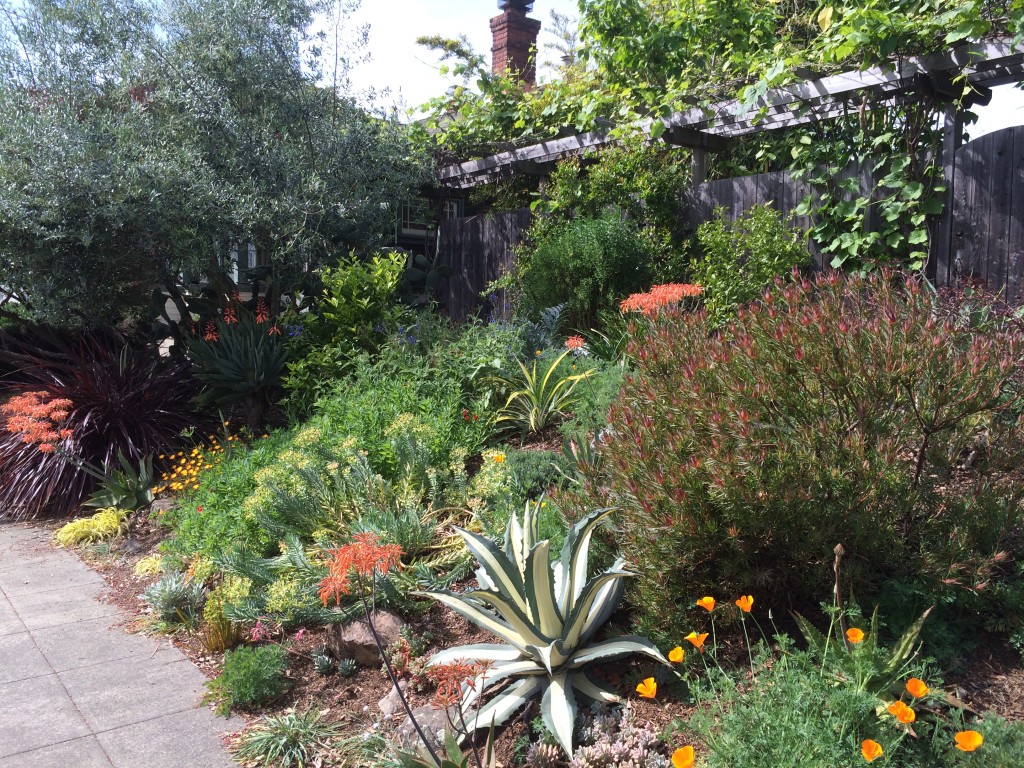Here in California, I think we all know we are well into a three year drought. As a human being and as a professional gardener, I have been hyper-aware of the lack of water. My interest in water conservation began in the 1970s with a memorable drought in my childhood. The drought of ’79 instilled in my awareness a feeling of saving it before using it. However, it wasn’t until I became a homeowner and avid home gardener, that I began to implement any water saving strategies on a larger scale. For the last 12 years I have been using grey water from my laundry system, for 10 years have been using bath/shower water in the garden, and have caught rainwater into a 1500 gallon cistern for 9 years. In my own 1/4 acre Berkeley garden, I have been a huge advocate for composting and mulching, and using drip irrigation. I only flush the toilet as needed, and I have been saving my dishwater in tubs and carrying them out to the garden bucket by bucket, despite a biceps injury…
And now, with no rain on the horizon, I ask myself what more can I do? Usually I would have turned my drip system on by now. It has only sincerely rained once since the new year. I have long wondered what to do with my amazing, huge, sunny garden besides growing my own food and selling and giving away the surplus. Now, I have decided to run an experiment: I wonder how long and how far I can stretch the grey water and collected rainwater into the season. My challenge is this: can I continue to grow a successful, lush, largely edible garden without using any fresh, pure, city water. Maybe I can help others to do the same.

homemade compost after 2 1/2 months getting dug into new planting beds
Fortunately this challenge comes at an interesting time in my life. For the moment, I have time to hand water bucket by bucket and watering cans of precious, captured rain water. I am on a personal journey of wanting to slow down my life and increase my mindfulness and presence in my body. After years of outward achievement, I am craving an inner attunement to my own rhythms and to the ecosystem in my garden. So I am rising to the occasion and experimenting with mulching more deeply than ever, and accelerating my composting system so that I can incorporate more organic matter into the soils to improve water holding capacity.

incorporation of homemade compost and heavy mulch of straw after planting shelling beans
As for the ornamental parts of my garden, such as the front yard, I have replaced some more water thirsty plants with succulents and low water plants. So far, the ornamental garden has been putting on a spectacular spring show.

drought tolerant front yard doing well without water